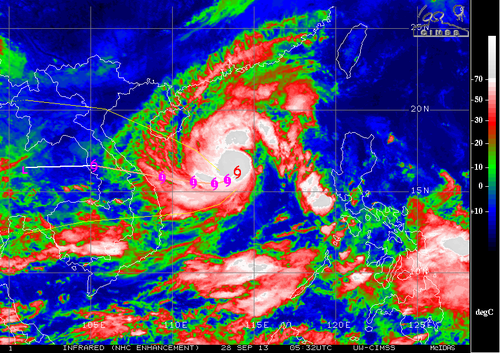Wutip Forms, Typhoon Usagi Update
This week the Northwest Pacific typhoon season continues to be active as another typhoon – typhoon Wutip – has spun up in the South China Sea and is tracking westward. Although this is good news for the residents of Hong Kong and southern China who have been affected by last week’s typhoon, Vietnam will now have to closely monitor Wutip. As of Friday night Wutip was only a high-end tropical cyclone but is expected to slowly continue to strengthen over the open waters of the South China Sea. It will likely only have enough time to strengthen to a category one typhoon before it makes landfall near the city of Da Nang. Still, residents of Vietnam will have to watch for storm surge that could wreak havoc in low lying coastal areas as well as flooding; much rain will be associated with Wutip. It’s expected that Wutip will make landfall Sunday night.

The storm talked about in last week’s EIWN, typhoon Usagi, has caused significant damage to coastal areas of China, in the Guangdong province. In total, 25 people have died in China due to landslides triggered by the heavy rains and storm surge. Search and rescue teams are still looking for survivors in the mud though, and cleanup efforts are now underway. Usagi made landfall 140km to the north-west of Hong Kong; there it brought with it sustained winds of 175km/h which gusted to over 200km/h. In Hong Kong over 200 flights had to be cancelled. Although once a powerful super typhoon, Usagi is no more as it moved over China’s mainland and fell apart this past week.

